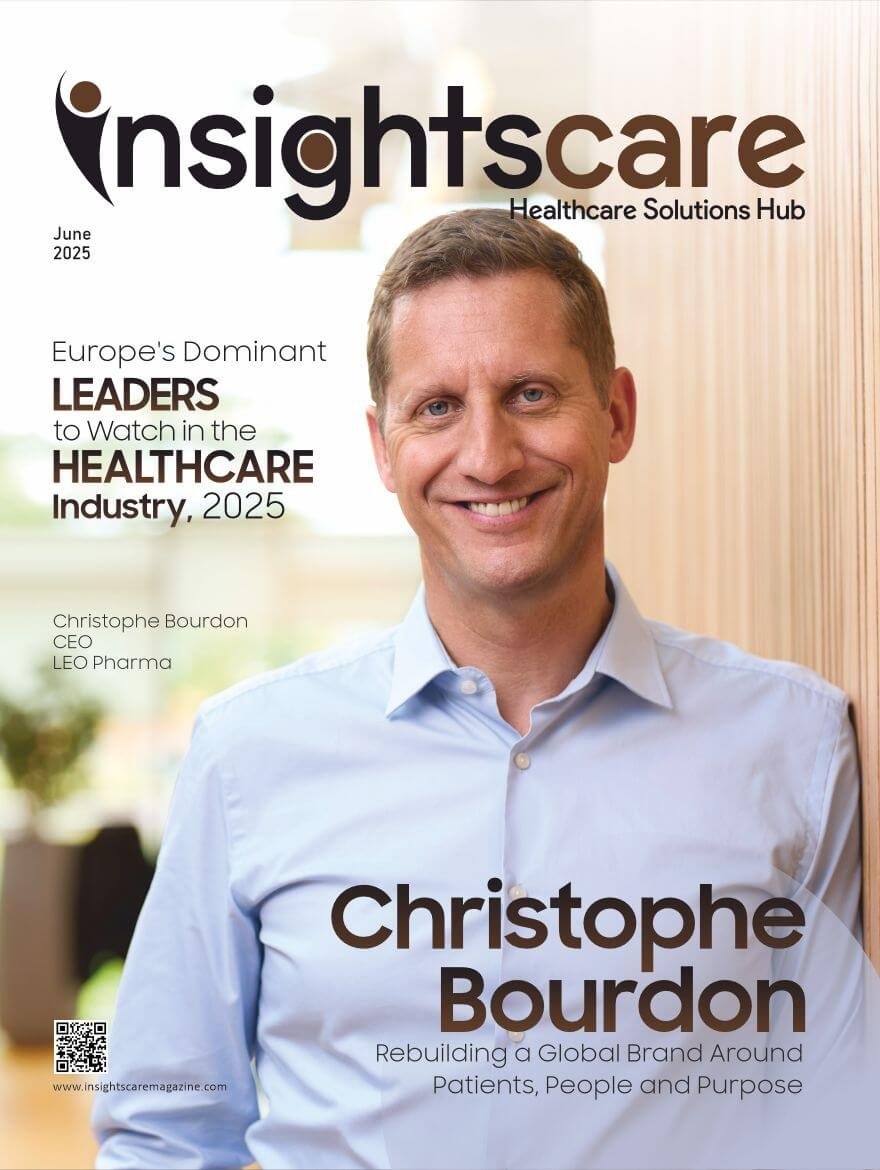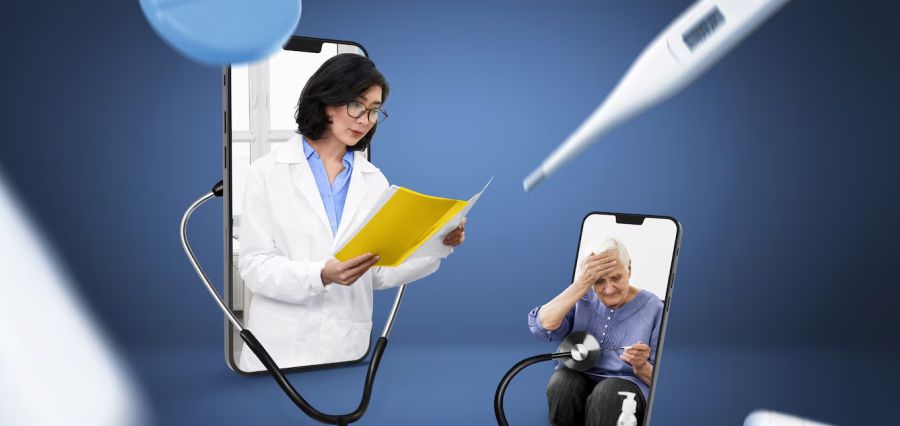In the age of technological advancements that are changing several sectors, the healthcare industry is on the verge of a significant and revolutionary transformation.
Telehealth, previously a specialized idea, has become a fundamental aspect of contemporary medical practice. The increase in remote healthcare solutions has been accelerated by worldwide events and technical progress.
It has opened vast, uncharted territories ripe for exploration and innovation. For healthcare providers, insurers, and tech innovators, these unexplored domains represent unprecedented opportunities to redefine patient care.
As we delve into the telehealth landscape, we uncover the potential to bridge healthcare gaps, enhance accessibility, and pioneer novel approaches to wellness. Exploring this frontier is more than a trend analysis. It is a guide for individuals ready to influence the future of healthcare delivery in this interconnected world.
The Current Telehealth Landscape
The current telehealth landscape encompasses diverse services, ranging from video consultations to remote patient monitoring. Primary care teleconsultations, telepsychiatry, and teleradiology have emerged as prominent offerings. They leverage high-definition video conferencing and secure data transmission protocols.
In the evolving telehealth ecosystem, regulatory compliance remains paramount. The Health Insurance Portability and Accountability Act (HIPAA) establishes stringent standards for safeguarding patient data.
All telehealth providers, including healthcare institutions and insurers, must adhere to these regulations. This compliance extends to the selection of technology vendors, who must demonstrate HIPAA-compatible infrastructure and willingly enter into business associate agreements.
These agreements legally bind vendors to maintain the same level of data protection as the healthcare providers. Such regulatory frameworks ensure that as telehealth services expand, patient privacy and data security remain at the forefront.
This is especially necessary with the boom in telehealth services.
According to the statistics presented by Grand View Research, the telehealth market in the United States has experienced unprecedented expansion. Its valuation of around $29.6 billion in 2022 is a testament to its growth.
According to industry analysts, there is expected to be a significant growth rate of 22.9% annually from 2023 to 2030. This indicates a period of transformation in healthcare delivery.
This rapid adoption has catalyzed innovations in remote diagnostics. Here, wearable integration and AI-assisted healthcare delivery signal a paradigm shift in patient care modalities.
Identifying White Spaces in Telehealth
White space analysis offers healthcare services a strategic pathway to expand their telehealth offerings. By systematically identifying underserved areas, providers can pinpoint lucrative opportunities for growth and differentiation.
For conducting a white space analysis in telehealth, Prolifiq states that providers must analyze comprehensive datasets encompassing patient demographics, utilization patterns, and engagement metrics.
This systematic examination reveals underserved segments and unmet needs within the telehealth ecosystem. Advanced data analytics and machine learning algorithms can uncover subtle trends. These can enable healthcare services to identify and capitalize on overlooked opportunities for service expansion.
In examining underserved specialties, providers might discover gaps in tele-neurology or tele-cardiology services among smaller hospitals.
Geographical analysis may reveal rural or remote healthcare institutions struggling with limited telehealth capabilities. Established providers can leverage this insight to offer comprehensive telehealth infrastructure solutions. These include HIPAA-compliant video platforms and remote patient monitoring systems for these untapped facilities.
Demographic assessment could uncover specific patient populations that partner healthcare facilities struggle to serve effectively via telehealth. For instance, developing geriatric-focused telehealth packages with simplified interfaces and integrated vital sign monitoring could address unmet needs in elderly care.
By capitalizing on these identified white spaces, healthcare services can strategically expand their telehealth offerings. They can forge new B2B partnerships and establish themselves as innovative leaders in remote healthcare delivery.
Technological Frontiers in Remote Healthcare
Emerging technologies are revolutionizing telehealth capabilities. 5G networks enable real-time, high-definition video consultations and rapid transfer of large medical files. Implement 5G-ready infrastructure to future-proof your telehealth services.
The National Library of Medicine states that 5G technology is revolutionizing telehealth by enabling high-speed, low-latency connectivity.
This advancement facilitates real-time data analytics, remote monitoring, and seamless communication among healthcare providers. Healthcare services can leverage 5G to implement AI-based solutions for predictive analytics and personalized medicine.
By adopting 5G infrastructure, telehealth providers can offer enhanced smart hospital initiatives and improve emergency response capabilities. This technology paves the way for more efficient diagnosis, treatment, and patient engagement in remote healthcare settings.
Moving on, augmented reality (AR) applications facilitate remote surgical assistance and enhanced patient education. Invest in AR development for specialized telehealth applications.
AI and machine learning are transforming remote diagnostics. Deep learning algorithms can analyze medical images with human-level accuracy, enhancing teleradiology services.
Moreover, integrate AI-powered diagnostic tools into your telehealth platform to improve accuracy and efficiency. Natural Language Processing (NLP) enables automated note-taking during virtual consultations, streamlining documentation processes.
Wearable devices and IoT are advancing continuous patient monitoring. Smartwatches and biosensors provide real-time vital sign data, enabling proactive healthcare interventions. Develop partnerships with wearable tech companies to offer integrated monitoring solutions.
IoT-enabled medication dispensers ensure proper adherence to treatment plans. Implement secure IoT platforms to manage and analyze the influx of patient-generated health data, enhancing predictive care capabilities.
FAQs
Q: What is white space analysis in telehealth?
A: White space analysis in telehealth is a strategic approach to identify underserved areas, patient populations, or specialties in remote healthcare. It involves analyzing comprehensive data sets to uncover opportunities for service expansion. It allows healthcare providers to differentiate their offerings and meet unmet needs in the market.
Q: How is 5G technology impacting telehealth?
A: 5G technology is revolutionizing telehealth by enabling high-speed, low-latency connectivity. It facilitates real-time data analytics, remote monitoring, and seamless communication among healthcare providers. 5G supports enhanced virtual consultations, AI-based solutions for predictive analytics, and improved emergency response capabilities in remote healthcare settings.
Q: What role do wearable devices play in telehealth?
A: Wearable devices advance continuous patient monitoring in telehealth. Smartwatches and biosensors provide real-time vital sign data, enabling proactive healthcare interventions. These devices, integrated with IoT platforms, allow for the collection and analysis of patient-generated health data, enhancing predictive care capabilities and treatment adherence.
The exploration of telehealth’s uncharted territories represents a pivotal moment in healthcare evolution. As we map these new frontiers, we’re not just expanding services but reimagining the very fabric of patient care.
This journey into telehealth’s potential will likely reshape healthcare accessibility, personalization, and efficacy on a global scale. The future of healthcare lies in our ability to navigate and innovate within these newly discovered spaces.
Read More: Click Here










